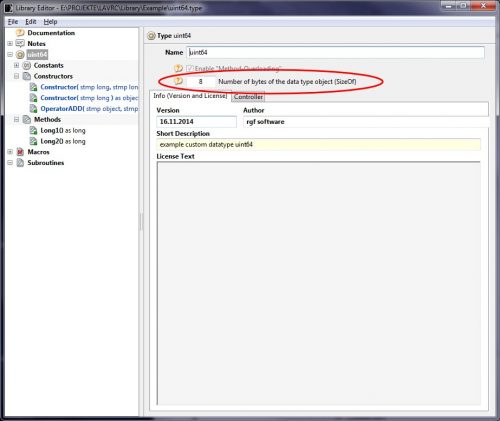Libraries - Type Constructor
A constructor for a type library is a method that is used for generating an object. The constructor method is called by the compiler when an object is to be created / initialized. For Type Libraries a constructor is optional, since the memory of the object is static as in a structure.
If a variable dimensioned by the type of the type library, it is already the space in the specified size.
How Much Memory an type-object allocates is defined by the author of the Type Library.
Constructor types
In the type library, there is only an optional standard constructor.
- Constructor - Called to create/initialize an type-object: new myobject(…). The created object is then temporarily stored in memory (on the stack) and is not assigned to a variable. More than one constructor are allowed.
The assignment to a variable, copying (cloning) or destroying is performed automatically by internal built-in functions.
Parameters of a constructor
The parameters that are defined for a constructor controls how and what kind of input data are possible while creating an type-object . Since multiple constructors may be applied, this may also differ.
Example 1
Constructor()
dim var as myobj var = new myobject()
Example 2
Constructor(size as byte)
dim var as myobj var = new myobject(123) 'following term selects and calls automatically the 'best-fit constructor with the value as parameter (like above): var = 123

